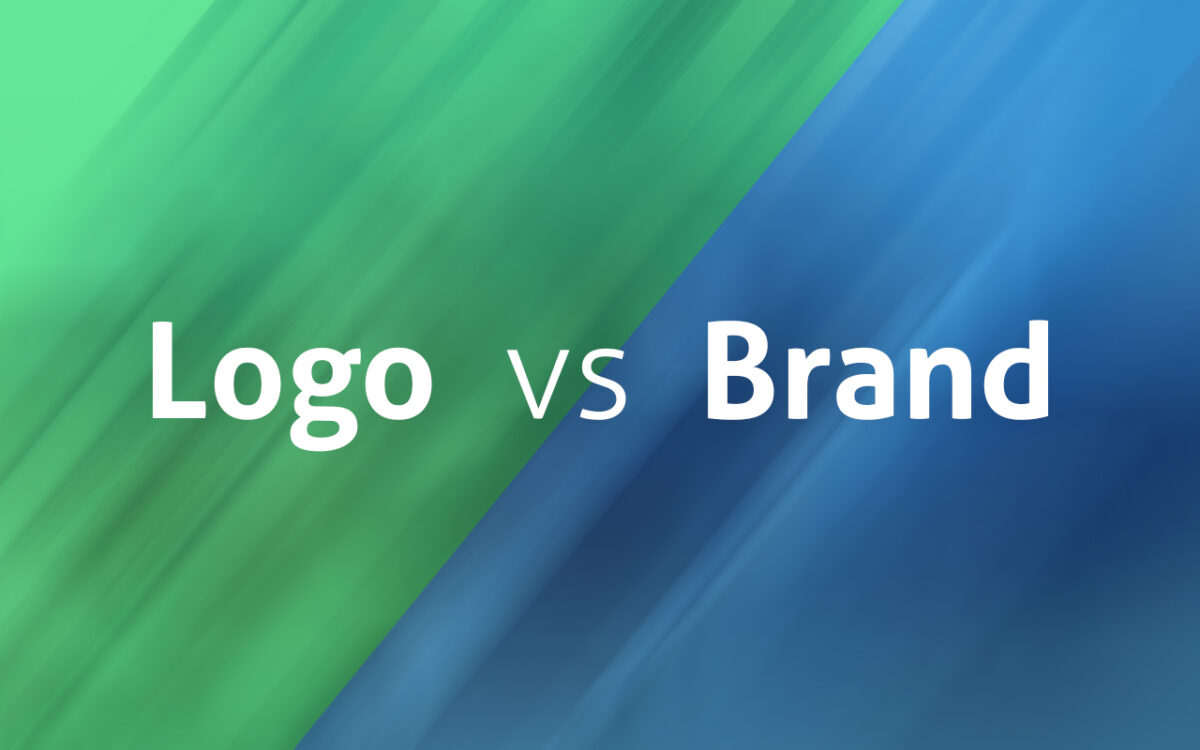Things about brand vs logo the business should know

Ever heard of these words ‘logo’, ‘designing’ & ‘branding’? However, although, they sound familiar, the purpose and its usage in marketing are quite different.
Companies have to struggle hard in their particular niche markets to stand out from the competition. Every company plans certain marketing tactics to target and attract customers and hone in on an audience that will benefit from your products and services. Also, your message needs to be delivered clearly to those specific people as they are the ones who will take action when they trust in what you do and what you stand for.
So, in marketing and sales, success with branding comes with excelling in all the above three areas I put forth. In this article, we will learn in detail about branding, logo design, the importance of both of them, and how it is useful for businesses.
What is a Brand?
A brand is described as a term, symbol, name, design, or some other characteristic that recognizes one seller’s good/service as diverse from the ones of different sellers. Companies can sell the same product but still, be convinced to purchase their product instead of the one from the competition by creating a brand.
When thinking about certain products/services, you can consider a brand as the idea or image people have in their minds, both practically and emotionally. Hence, it’s no longer just the physical features, but additionally the feelings the clients develop towards a product or a business enterprise. Though a product can easily be copied by others in the market, a brand will always be unique. For instance, Pepsi and Coca-Cola taste almost similar, but for some reason, people are more connected to the latter one.
Types of Brands
The type of brand you select can help in your business decisions and should be included in your overall business planning. But, keep in mind that various brands suit various products and services and will appeal to different customers. A few examples of many types of brands are –
- Attitude brands – These are based on ‘feelings’ rather than the physical features of a product/service. Commonly used for sportswear & soft drinks.
- Symbolic brands – Similar to attitude branding, symbolic branding uses the emotional aspect of a service to attract and retain clients. It’s usually used for services such as phone companies & banks.
- Functional brands – Functional or physical features of a product or service are redundant important than emotional aspects. Functional branding gives a reason why a person should buy a services or products.
- Individual brands – Few businesses choose to give a separate brand for each of their product and service. This can sometimes lead to competition against each other like various flavors of soft drinks produced by the same company. Individual branding enables to keep one-of-a-kind components of a business separate, particularly if that they span several areas, which includes a business that sells food in addition to clothing.
- Own brands – Also known as private labels or store brands, these are brands that carry the retailer’s name. Commonly used by supermarket chains. Smaller businesses may also use their brands – such as a beautician may also have their line of beauty products to use and sell.
Before getting deep into it, first, let us understand the basic concepts of branding.
Definition of Branding
The process of building your brand is known as branding.
It’s a way of identifying your business by combining elements such as logo, design, mission statement, a steady theme, and other collateral – how customers recognize and experience your business. A good brand should reveal what your business stands for and how it sets apart from other competitors and build a loyal customer base.
Why is Branding important?
Branding is extraordinarily critical to a business because of the overall effect it makes on your company. It can change how people recognize your brand, can drive new businesses, and also increase brand value. Besides, it can also do the opposite if done wrongly or not at all. Remember, a wrong brand name choice can sink your ship before you can set sail.
For branding to be successful, you should
- Know your audience – One must be able to identify the target market, not just going by the demographics, but also by tastes. And once you’ve figured it out, you can create an identity that draws their attention and business.
- Everything counts – Brand consistency is the key. The graphic elements, copy, and any sort of content that you include all must be part of the same concept. All of it needs to be tailored to the preferences of the target consumer.
- Memorable is vital – The only way to get your brand noticed is by standing out apart from the crowd. When creating a brand, consider sketching branding ideas to get a sense of how they look on the page before you create it. Try reviewing it from a customer’s point of view.
An essential way to take before naming your Brand
The attractiveness of a company/product is usually complemented by effective brand names that attract different customers. The naming and branding process can be time-consuming and difficult. For any brand name, brainstorming and work-shopping are essential before the right idea turns into the right concept. Putting in some time and effort to come up with the right brand name will certainly save your money in the long run as re-branding could be an expensive process and also risky for business.
A step-by-step process for naming your business is –
- Decide whether you’ll consult the experts.
- Come up with a thing for your brand name.
- Brainstorm different names.
- Check for trademark violations.
- Create a brand image for each idea.
- Make the final decision
Importance of Branding for business
Branding can –
- Increase business value
- Generate new customers
- Improve employee pride & satisfaction
- Create trust within the marketplace
- More People Will Recognize Your Business
- Improve your advertising
- Create loyal customers
What is a Logo?
An easily recognizable, visual design element, often containing a name, specified colors, symbol or trademark is known as a logo. It’s a quick representation of a brand that is SMART.
S- Simple
M-Memorable
A-Appropriate
R – Resizable
T – Timeless
A good logo should be – eye-catching, work well large or small, encompass your brand vibe.
When designing a company’s logo, a few questions to keep in mind are –
- what type of logo’s would be there
- the kind of logo that would best suit your business
- key points about your business that a logo should convey
- what are the best logo colors and fonts to consider
- Should I design a logo myself or hire a designer
- the cost of the logo
- where should the logo be displayed
- what mistakes to avoid
Things to consider before designing a Logo
There are certain rules to comply with before commencing a logo design.
- Exploration and dissect the requirements & pretensions of the business
- Do not rely on trends
- Try to create your logo in black & white first
- Pay attention to scalability
- Think out of the box
- Strive for minimalism
- Test your logo on different mediums
- Your logo needs a core concept
- Learn from the success of others
- Break the rules
What makes a logo stand out?
- It should be audience-appropriate
- Easy to read
- Be distinct & scalable
Importance of Logo Design for business
An essential part of making your brand a successful one is having a logo. So, why do you think a logo is important? A logo –
Grabs attention
Any company has about 2 seconds to convince their potential customers that their products are worth any consideration. A logo can promptly snap the viewer’s attention and pass on the company’s core values interestingly. Consumers can judge your business by appearance if you have a strong solid logo.
Makes a strong first impression
A logo is the company’s first intro to consumers. If designed well, it can raise the interest of the public & encourage them to learn more about the company. If not, you’ve just lost a potential customer and tanked your business.
Is the foundation of your brand identity
Telling a story that will influence customers’ emotions is all about successful branding. Logo design is only a component of a company’s brand. It serves as the basis for the entire message on which a brand is built. The colors, tones & fonts for your logo sets the stage for this story. These elements will later create a concrete, marketable brand identity.
Is memorable
Logos are the symbol that consumers use to recognize your brand. People usually directly connect with the sight of your logo, and most of all how it makes them feel. Because a good logo is a visually delightful factor. It sets off a positive recall about your brand. And for that audience who will probably forget the name of a business, they’ll straightaway match your logo with the memories of your brand.
Differentiates you from the competition
Your company logo lets your consumers know why your business is unique. With the right icon or proper font, a well-designed logo can communicate everything from the company’s background to its mission. A logo is a forum to convey your values and show customers why you are different from other competitors.
Promotes brand loyalty
Your logo is going to become quite familiar to a wide range of consumers with the rise in your brand, and this familiarity creates an opinion that you are accessible and trustworthy. Having an exceptional logo is what matters in driving them. An impressive and attractive logo plays a vital role in branding a business.
Your audience expects it
Last but not the least; A logo will be the first thing that your audience will look for when they see any communications from your brand. It should be at the center of all your marketing materials. You would be missing a chance to make your business stick in the minds of your audience, if you don’t have a logo.
CONCLUSION
A logo is a graphical part that represents a brand, while a brand is a combination of all the real & intangible aspects that represent an organization. A unique logo with an effective branding strategy helps the organization effectively reach audiences and also create a flexible, industry-leading brand.

